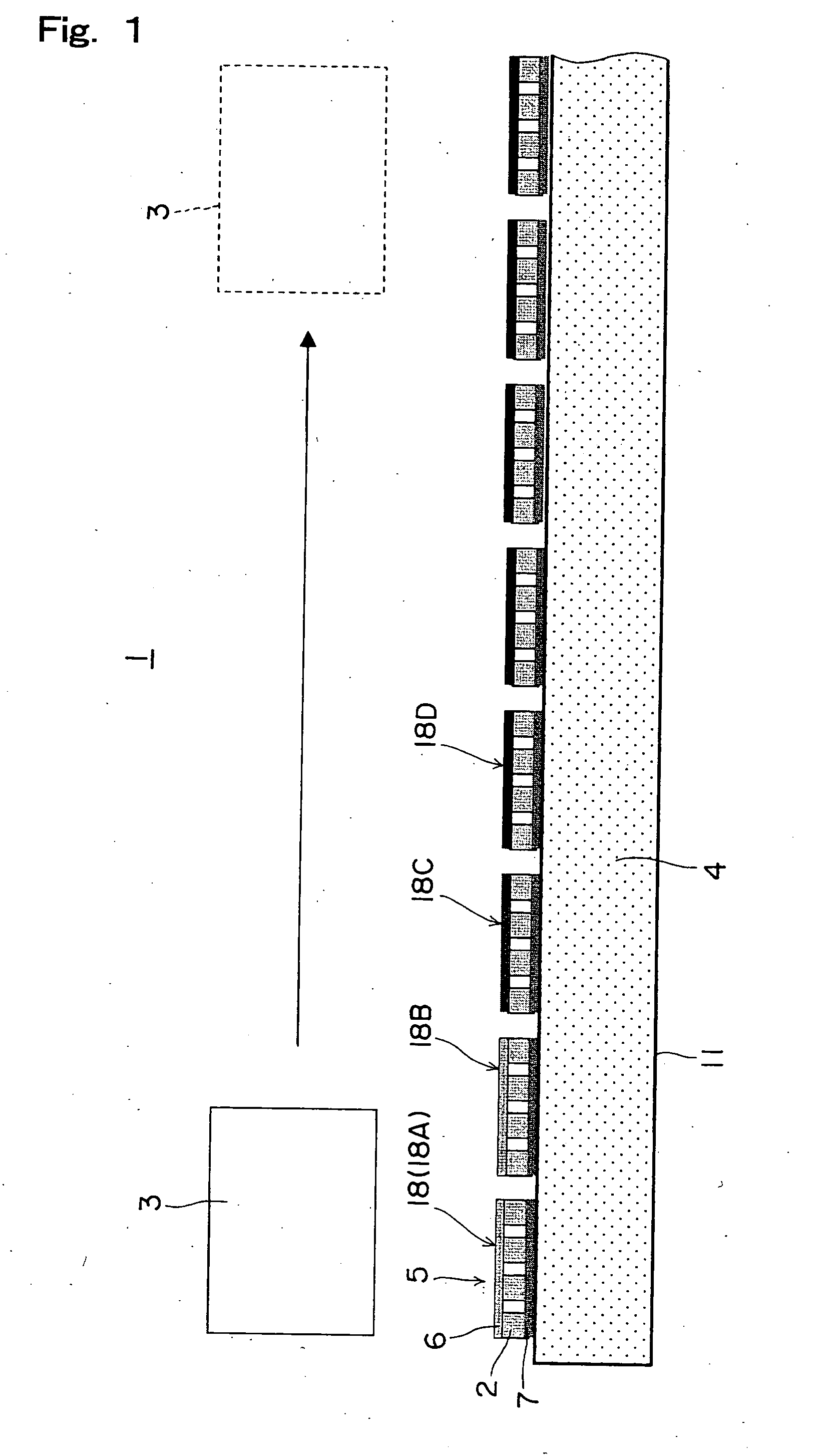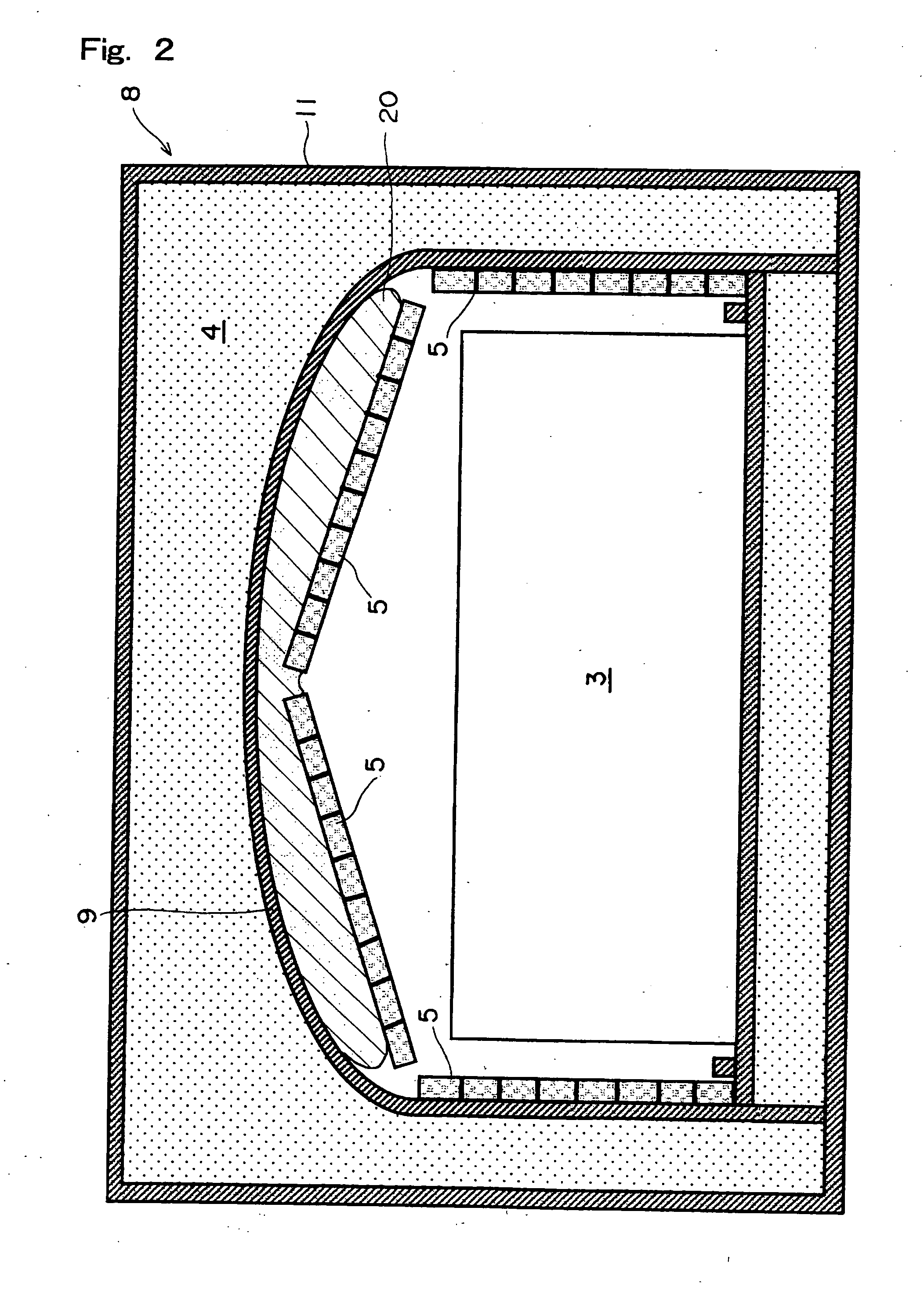Thermoelectric Conversion System and of Increasing Efficiency of Thermoelectric Conversion System
a conversion system and thermoelectric technology, applied in the manufacture/treatment of thermoelectric devices, electrical apparatus, generators/motors, etc., can solve the problems of increasing the utilization of waste heat, the possibility of exceeding the maximum working temperature melting of joining materials, etc., to achieve low emissivity, reduce the quantity of heat input, and maintain the soundness of the thermoelectric conversion module
- Summary
- Abstract
- Description
- Claims
- Application Information
AI Technical Summary
Benefits of technology
Problems solved by technology
Method used
Image
Examples
example
[0078] A plurality of thermoelectric conversion modules 5 were installed along the movement path of the work 3 inside the muffle 9 in the cooling zone 9c of the sintering furnace 8 shown in FIGS. 1 to 4. The axial length L1 of the preheat zone 9a of the sintering furnace 8 is 3 m, the axial length L2 of the sintering zone 9b is 4 m, and the axial length L3 of the cooling zone 9c is 8 m. As shown in FIG. 4, the work (graphite box) 3 heated by the preheat zone 9a and sintering zone 9b is at 100° C. at the outlet of the sintering zone 9b, that is, the inlet of the cooling zone 9c. It is assumed that a main stream temperature of cooling water as the coolant 4 is 30° C. almost constantly. The reduction atmosphere is inside the muffle 9 of the cooling zone 9c. The thermoelectric elements of which maximum working temperature is 550° C. were used as the thermoelectric conversion modules 5, and the installation range L4 of the thermoelectric conversion modules 5 was 2.5 m from the inlet of t...
PUM
 Login to View More
Login to View More Abstract
Description
Claims
Application Information
 Login to View More
Login to View More - R&D
- Intellectual Property
- Life Sciences
- Materials
- Tech Scout
- Unparalleled Data Quality
- Higher Quality Content
- 60% Fewer Hallucinations
Browse by: Latest US Patents, China's latest patents, Technical Efficacy Thesaurus, Application Domain, Technology Topic, Popular Technical Reports.
© 2025 PatSnap. All rights reserved.Legal|Privacy policy|Modern Slavery Act Transparency Statement|Sitemap|About US| Contact US: help@patsnap.com



